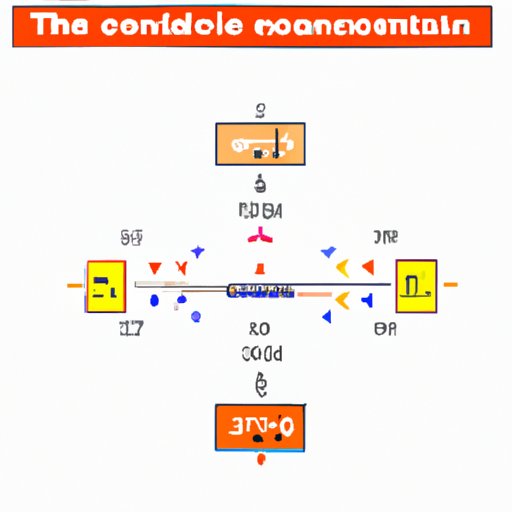I. Introduction
Converting degrees to radians is an essential skill in advanced math and physics. However, many people struggle with the conversion process. In this article, we will provide you with a comprehensive guide to converting degrees to radians easily and quickly. We will also share tips and tricks to help you master this conversion process.
II. Background information on degrees and radians
A degree is a unit of measurement for angles, commonly used in geometry. The origin of degrees dates back to ancient Babylon where they introduced the 360-degree circle to measure angles. On the other hand, a radian is a unit of measurement for angles. One radian is equivalent to the angle spanned by an arc that is equal in length to the radius of a circle. Radians were introduced in the 17th century by European mathematicians to simplify trigonometric calculations. Today, radians are widely used in advanced math and physics because of their relationship with the trigonometric functions.
III. Conversion formula and step-by-step instructions
The formula for converting degrees to radians is simple. To convert degrees to radians, multiply the degree measure by π/180. Here are step-by-step instructions for converting degrees to radians:
Step 1: Write down the degree measure you want to convert to radians.
Step 2: Multiply the degree measure by π/180.
Step 3: Simplify the expression to obtain the radian measure.
For example, 60 degrees = 60 x π/180 = π/3 radians
IV. Tips and Tricks for Conversion
There are various methods to convert degrees to radians that may be easier for different people. Here are some of the most common methods with detailed explanations:
1. Converting through Trigonometry: angle in degrees x pi/180 = angle in radians
This method is the quickest and most straightforward. It is perfect for people who have a good grasp of trigonometry. Simply use the conversion formula of angle in degrees x pi/180 = angle in radians to convert degrees to radians
2. Visual Aids
This method is excellent for visual learners. It uses a circle to help you imagine and work through the conversion process. Imagine a circle with a radius of 1. Imagine that the radius is equal to a straight line from the center of the circle to its circumference. Then, one radian is the angle formed by one radius arcing the length of the circumference of the circle. This angle is equal to 57.3 degrees. Therefore, to convert degrees to radians, you can divide the angle in degrees by 57.3.
3. Mnemonic Devices
This method involves memorizing simple equations that make it easy to convert degrees to radians. For example, “Degrees and Minutes are Dull, Use Rad for More Fun.” This equation reminds you that to convert degrees to radians, you need to multiply by pi/180.
V. Application of degrees to radians in real life
Degrees to radians conversion is crucial in various fields such as navigation, computing, and engineering. Here are some examples of how this conversion is useful:
1. Navigation
In navigation and map-making, we use degrees to measure angles. However, when we calculate the shortest distance between two points, we convert the measured angle from degrees to radians. This conversion helps to simplify the calculations and enables us to determine the shortest path accurately.
2. Computing
In computer programming, we often use radians instead of degrees because radians make it simpler to calculate trigonometric functions like sine, cosine, and tangent. These functions are frequently used in graphics and game programming.
3. Engineering
In engineering, radians are useful in calculating velocities, accelerations, and angles of moving objects accurately.
VI. Conclusion
Converting degrees to radians is an essential skill in advanced math and physics. In this article, we have provided a comprehensive guide to help you master this skill. It is crucial to know the conversion formula and the different methods available to convert degrees to radians. With practice, you will become more comfortable with the conversion process. Remember, there are resources and help available if you ever need assistance.
